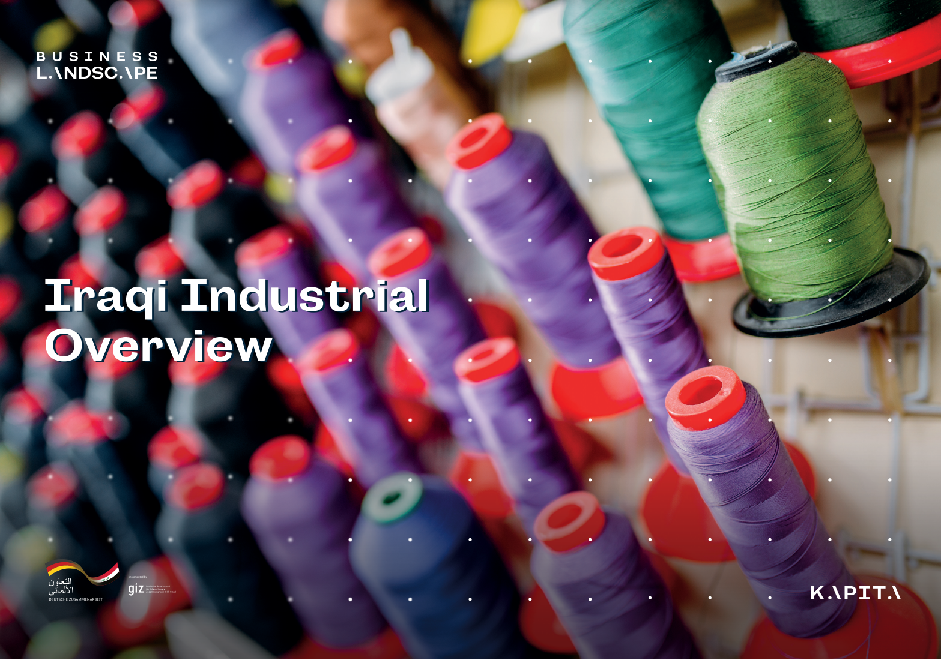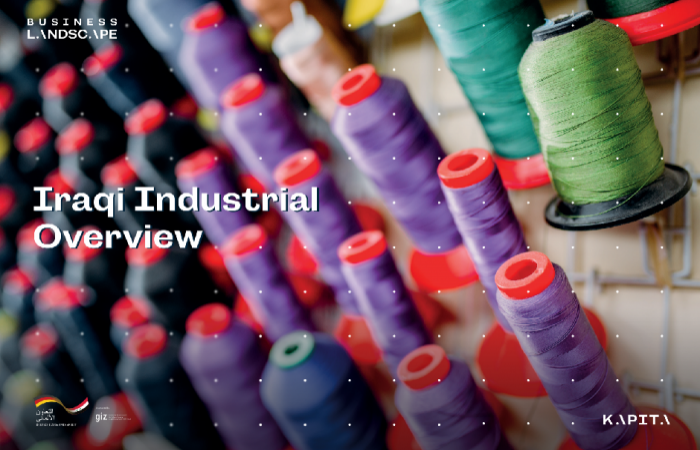This report provides a general overview of the Iraqi industrial sector. It starts with a briefing about why the industrial sector is very crucial for Iraq’s future economy. As a more advanced industrial sector leads to greater GDP value, higher salaries, and better services provided by efficiently-trained labor. Despite this fact, there has been huge negligence of the industrial sector from the government over the years as most of the focus was on the petroleum industry since Iraq is known to be an extremely oil-dependent country that lacks other developed sectors, this led the industrial sector to become highly dependent on the money generated from the oil. This publication is part of Business LANDSCAPE series which a series of research publication aims to highlight the current situation of Iraq’s economy and private sector through publishing researches and data and make it freely available for the benefit of investors, and the local and international community This study is published in partnership with GIZ |  |
This report provides a general overview of the Iraqi industrial sector. It starts with a briefing about why the industrial sector is very crucial for Iraq’s future economy. As a more advanced industrial sector leads to greater GDP value, higher salaries, and better services provided by efficiently-trained labor. Despite this fact, there has been huge negligence of the industrial sector from the government over the years as most of the focus was on the petroleum industry since Iraq is known to be an extremely oil-dependent country that lacks other developed sectors, this led the industrial sector to become highly dependent on the money generated from the oil.
The report then goes to give historical background information about the industrial sector in Iraq from 1920 up until today. The industrial sector in Iraq has gone through numerous phases in recent history. These phases started from the establishment of Iraq’s republic and the initiation of the first industries such as cotton gin, grain mills, hand weaving workshops, and small craft making. The report also passes through the law of nationalization in1964 and its effect on the industrial sector, then it goes to the 1980s where the industrial sector in Iraq focused on the military industry followed by the 1990s siege that was imposed on Iraq, and the current situation of the industrial sector after 2003.
The report moves forward to discuss the employment rates in the industrial sector. These rates are presented compared to other primary sectors in Iraq and also compared with MENA region countries. To have a wider image of the employment rates, the result shows the differences between the genders as well.
Additionally, the report sheds light on the number of industrial establishments within the industrial sector in Iraq over the years. These numbers are presented alongside the corresponding employees’ number for the given year, and divided based on the industrial establishments’ size; small establishments with 1-9 workers, medium establishments with 10-29 workers, large establishments with 30 or more workers.
Moving forward, the report discusses the geographic location of the industrial establishments over the different cities of Iraq. It was found that Baghdad has the greatest number of establishments with a total of 5067 establishments followed by Babil with 3542 establishments. While Al-Muthana had one of the least numbers of establishments with a total of 819 following Salah Al-Din with 824 establishments, as second and third to last, respectively.
Another aspect the report is concerned with is cost and production values within the industrial establishments and the annual average salaries for employees in recent years and what is the relationship between the total salaries in million Iraqi dinar with the number of employees in different years.
Also, the report talks about the governmental laws and regulations such as the Industrial Cities Law ( 2018 ), Ministry of Industry and Minerals Law (2011), and the Investment Law (2006). In addition to the industrial national development plan of 2018-2022.
The report also covers the trading volume in the industrial sector in Iraq and the market value for the prominent industrial companies in the country alongside the foreign investments these companies receive.
The report concludes with the currently available projects for investments and with a set of recommendations to increase the productivity of the industrial sector in Iraq.
